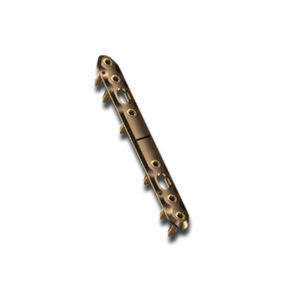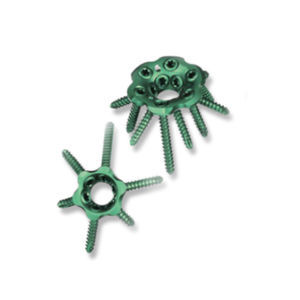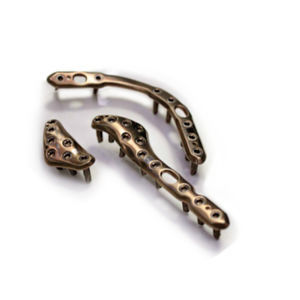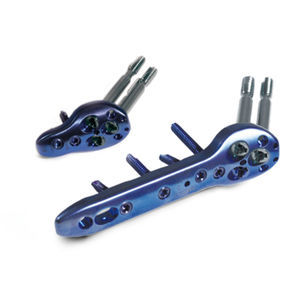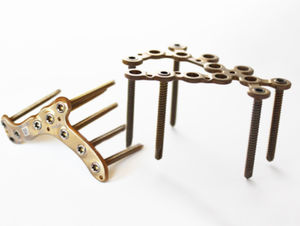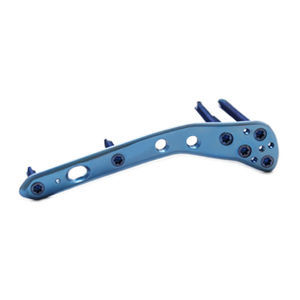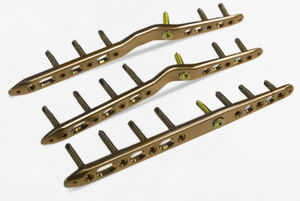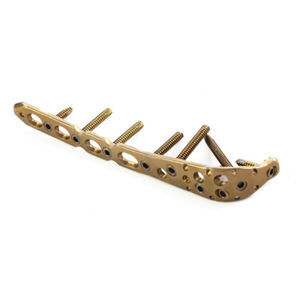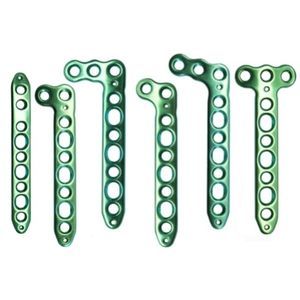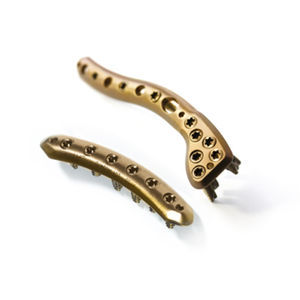
Pelvis compression plate lockingmetallic
Add to favorites
Compare this product
Characteristics
- Applications
- pelvis
- Locking
- locking
- Materials
- metallic
Description
Injured pelvic ring of type B and C resulting from trauma and sin- gle fracture of the pubic symphysis occurred during the birth re- quire stabilization. Stabilization of pubic symphysis in trauma cases is necessary in order to eliminate the rotational and vertical displacement of half of the pelvis as a result of sacroiliac joint ligaments rupture.
The stabilization of sacroiliac joint is necessary in order to per- form the fixation of pelvis while carrying stabilization of the pu- bic symphysis. Otherwise, secondary displacement of pelvis half and migration of implant may occur.
Both bones of the pelvis are connected by motionless amphiarthrosis, which gap filled with cartilage. The motion freedom of amphi- arthrosis is controlled by ligaments. In the case of pelvic rupture fixation the three level biomechanical structure of pelvis loses its mobility. The patient may feel pain in the hip joint and cross-lumbar part of spine. Connected by metal constructions the pelvic joints continue to try to be free and as a result of millions of cycles of overloading they may be damaged which may lead to their displace- ment and migration. Single, 2cm fracture of pubic symphysis occurred during the birth does not lead to serious consequences. Fractures over 2 cm can lead to so-called, “duck walk" and permanent pain of the sacroiliac joint. Hence the main and basic indication for pubic symphysis stabilization is pelvic instability.
There are two methods of pubic symphysis stabilization with use of:
-rigid plate,
-movable plate (hinged).
Catalogs
No catalogs are available for this product.
See all of ChM‘s catalogsRelated Searches
- Bone plate
- Compression plate
- Metallic compression plate
- Locking compression plate
- Titanium compression plate
- Distal compression plate
- Compression bone screw
- Metallic compression bone screw
- Interbody fusion cage
- Orthopedic surgery surgery set
- Proximal compression plate
- Forearm compression plate
- Mid-shaft compression plate
- Arthrodesis nail
- Lateral compression plate
- Tibia compression plate
- Radius compression plate
- PEEK interbody fusion cage
- Humeral compression plate
- Metallic intramedullary nail
*Prices are pre-tax. They exclude delivery charges and customs duties and do not include additional charges for installation or activation options. Prices are indicative only and may vary by country, with changes to the cost of raw materials and exchange rates.










